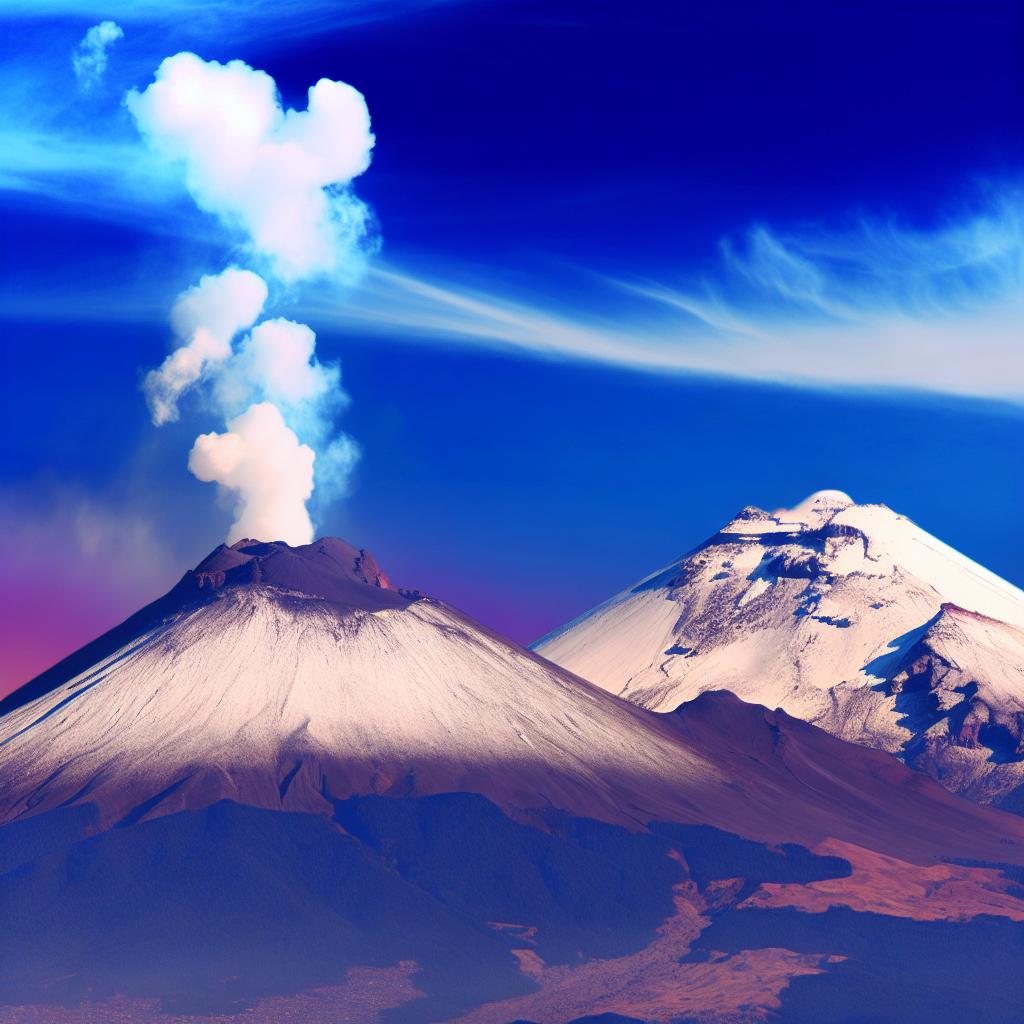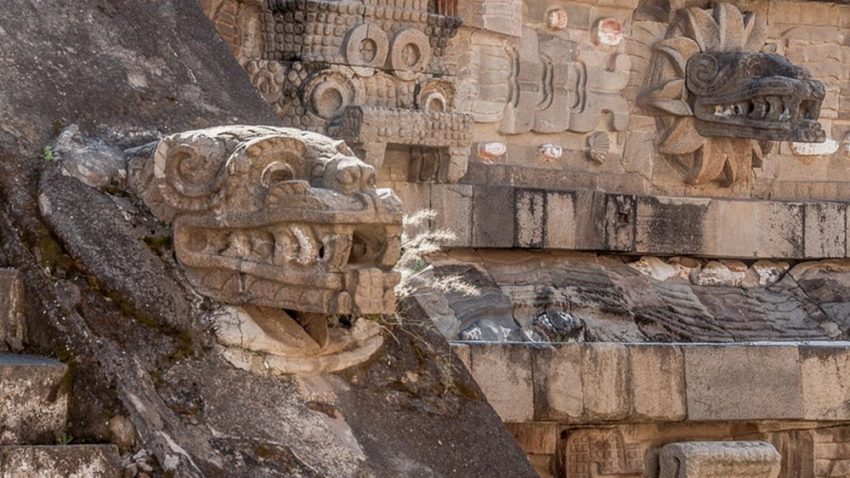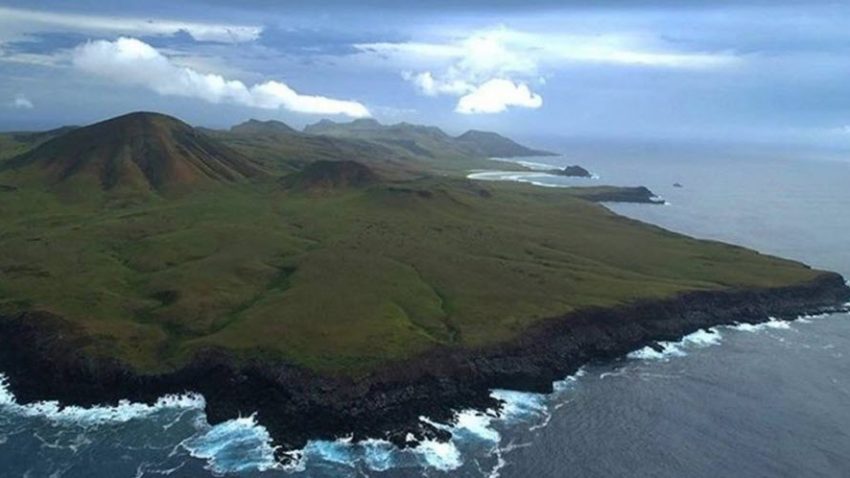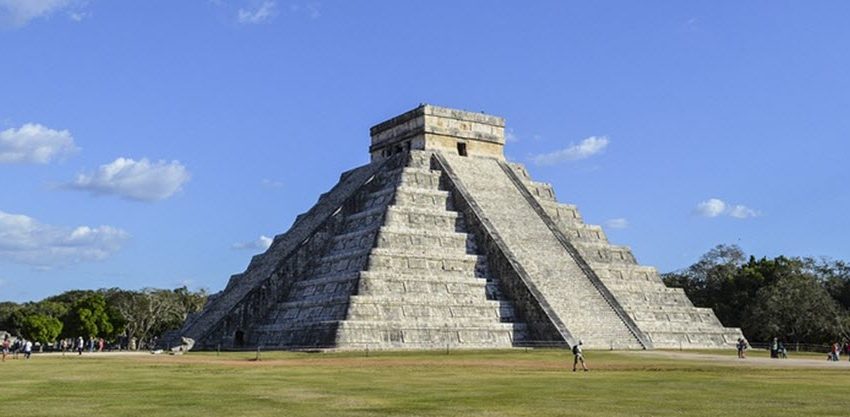Introduction to Mexico’s Iconic Volcanoes
Located in Central Mexico, the magnificent volcanoes of Popocatépetl and Iztaccíhuatl are among the country’s most awe-inspiring natural features. These peaks, part of the Trans-Mexican Volcanic Belt, not only offer stunning scenery but also hold significant cultural and historical importance.
Popocatépetl: The Active Giant
Popocatépetl, often referred to as “El Popo,” stands as a prominent symbol of Mexico’s geological and cultural landscape. Rising to an imposing 5,426 meters (17,802 feet), it is the second-highest peak in Mexico. The name “Popocatépetl” is derived from the Nahuatl words for “smoking mountain,” apt for its frequent volcanic activities. To keep track of its latest developments, you can visit the official Mexican Geological Service website.
Geological Characteristics
Popocatépetl’s structure is a textbook example of a stratovolcano, defined by its symmetrical shape and a large glacial cap that crowns its summit. The volcano’s eruptive history is marked by a variety of events, ranging from minor ash emissions to significant lava flows. Advanced monitoring systems constantly track these activities to mitigate risks to nearby towns and populations. Seismic sensors, satellite imagery, and gas emission monitors are among the critical tools used by researchers in their ongoing study of Popocatépetl.
Historical and Cultural Significance
The cultural footprint of Popocatépetl extends beyond its dramatic physical presence. It is a key figure in Aztec mythology and continues to feature in the narratives and rituals of local communities. The Aztec legends often portray Popocatépetl as a brave warrior, eternally watching over the dormant form of Iztaccíhuatl. This narrative is a poignant reflection of love, bravery, and sacrifice, themes that are deeply ingrained in the cultural psyche of the region. Communities surrounding the volcano have protected their traditions over the centuries, blending ancient lore with the rhythms of modern life. Celebrations, storytelling, and rituals are held in honor of Popocatépetl, ensuring that the stories about the ‘smoking mountain’ are passed down through generations.
Iztaccíhuatl: The Sleeping Woman
Iztaccíhuatl, romantically referred to as the “Sleeping Woman,” complements the story and significance of Popocatépetl. Standing at 5,230 meters (17,160 feet), it is the third-highest peak in Mexico and carries its own set of geological and cultural stories.
Geological and Environmental Features
Iztaccíhuatl’s profile is marked by its distinct peaks which give it the appearance of a resting woman, complete with head, chest, and legs. Unlike its active neighbor, Iztaccíhuatl is considered dormant, having no recorded eruptions in recent history. The mountain is a testament to geological diversity, with zones ranging from lush forests on its lower slopes to snowcapped peaks at the summit. These varied ecosystems support a rich biodiversity. The flora includes dense pine forests, while the fauna ranges from small mammals to a variety of bird species.
Legend and Lore
No less celebrated is Iztaccíhuatl’s place in cultural history. According to local lore, Iztaccíhuatl was a princess who tragically died from heartbreak after receiving false news regarding her beloved Popocatépetl’s demise in battle. In grief, she was transformed by the gods into a mountain, lying in repose beside Popocatépetl. This tale serves as a cultural touchstone, symbolizing profound themes of love and loss that resonate with the human experience. Such legends contribute to the mystique of the mountains, providing a cultural tapestry that is as rich and diverse as the ecosystems they nurture.
Tourism and Exploration
The allure of Popocatépetl and Iztaccíhuatl extends to the realm of tourism, attracting hikers, climbers, and nature enthusiasts from around the world. The peaks offer challenging terrains and breathtaking views for those brave enough to explore their heights. Various hiking routes are available, each presenting its particular challenges and rewards. Journeying through these landscapes is not only a physical endeavor but also an opportunity to connect with the cultural stories embedded within the mountainsides. Guides, often locals with profound knowledge of the area’s history and ecosystem, lead the way, ensuring a safe and enlightening experience for visitors.
Ecotourism and Conservation Efforts
The surge in visitors has spurred efforts towards sustainable tourism and conservation. Awareness campaigns promote environmental stewardship, encouraging travelers to minimize their impact on the natural landscape. Conservationists work tirelessly to protect the delicate balance of the ecosystems, focusing on preserving native species and combating the adverse effects of climate change on the glaciers that cap the mountains. Measures such as trail maintenance and the promotion of eco-friendly facilities aim to ensure that future generations can experience these wonders.
Conclusion
Together, Popocatépetl and Iztaccíhuatl stand as eloquent testimonies to Mexico’s vibrant natural and cultural heritage. Their imposing presence, dynamic geological features, and cultural narratives create a rich tapestry that continues to engage geologists, historians, and travelers alike. In science, they provide invaluable insights into volcanic activity and ecosystem diversity. Culturally, they preserve stories of ancestors, embodying themes of love, legend, and enduring spirit. For anyone fortunate enough to explore their realms, these mountains promise not only spectacle but also an intimate glimpse into the soul of Mexico. Whether viewed as natural wonders or as canvases of myth and tradition, Popocatépetl and Iztaccíhuatl are emblematic of a nation’s identity and resilience.







